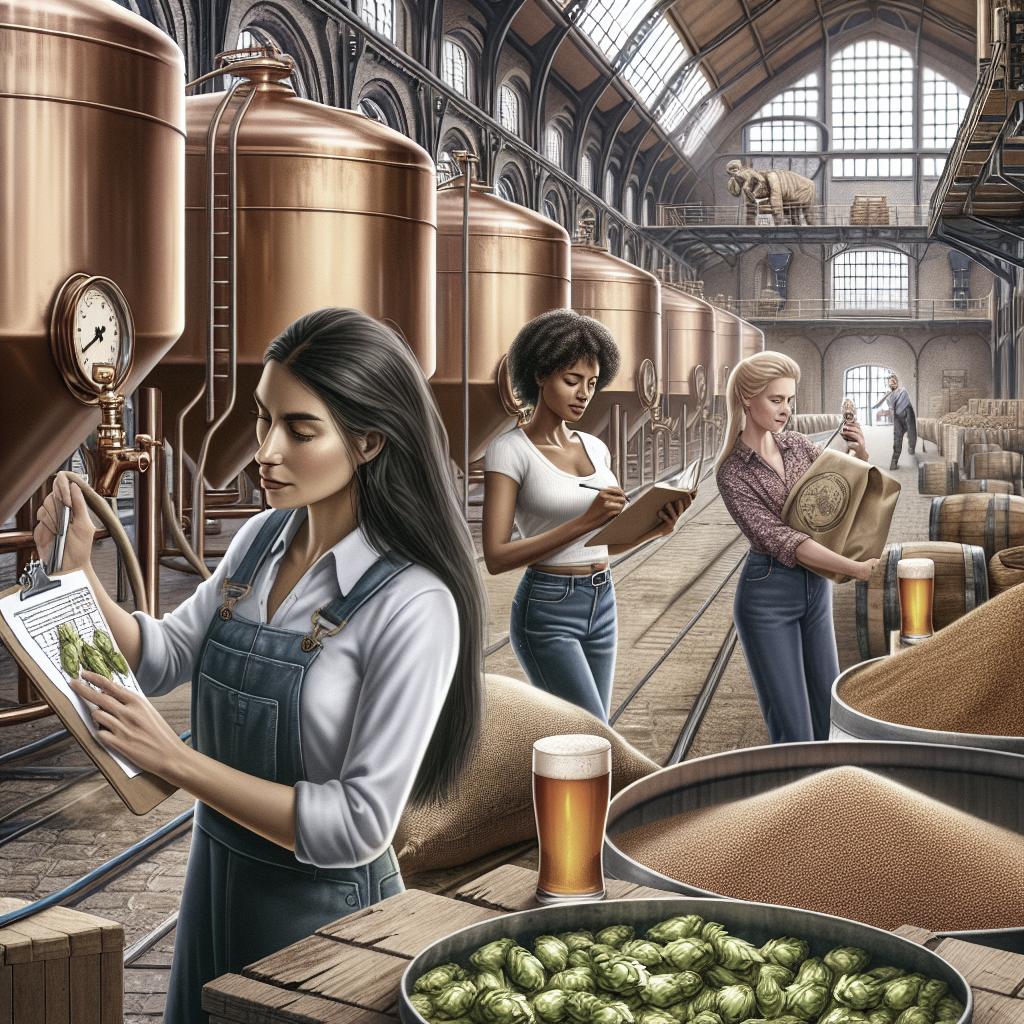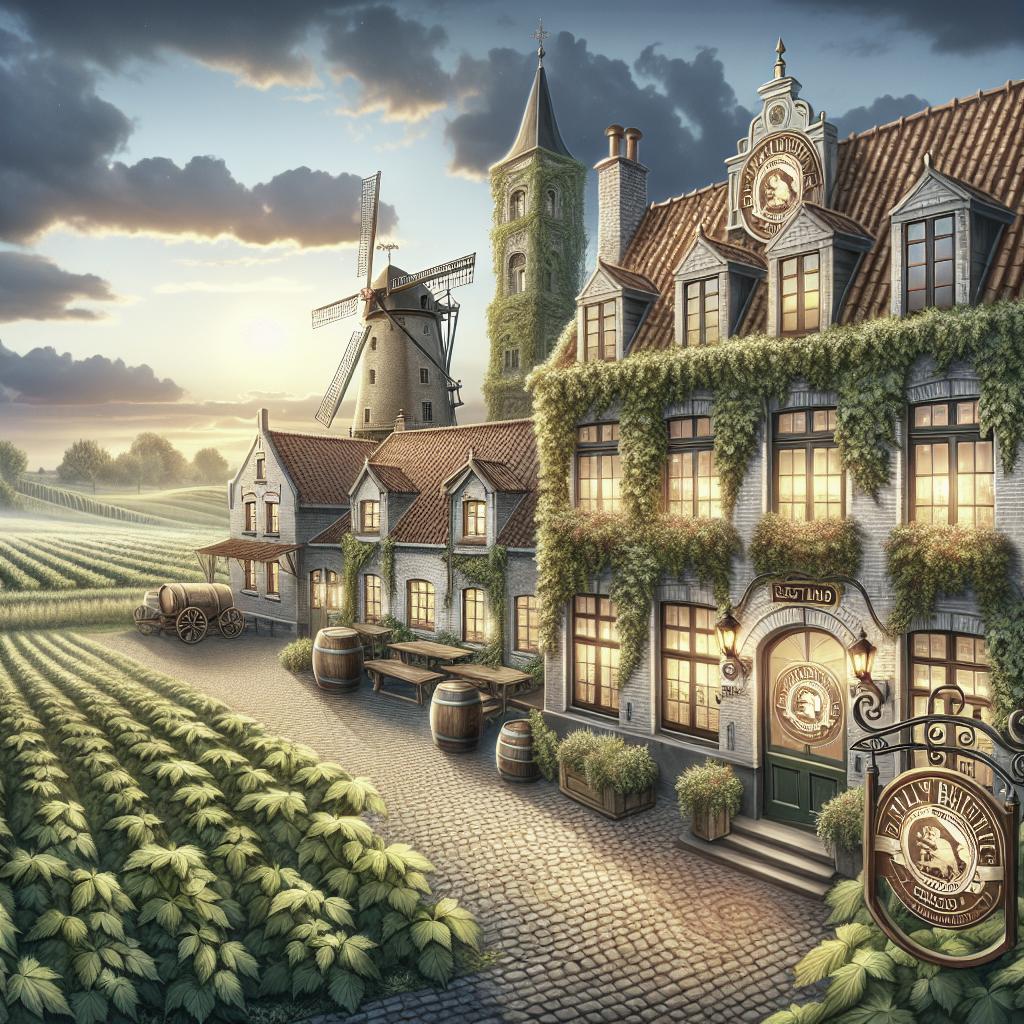“`html
The Contributions of Women in Belgian Brewing
Introduction
Women have played a pivotal role in the history of brewing, and their contributions are especially noteworthy in Belgian brewing. This blog post explores how female brewers have influenced beer production from ancient times to the modern era, touching upon their roles in early brewing traditions, the shift towards male-dominated industry, and the ongoing journey of women reclaiming their place in brewing. With historical insights and contemporary examples, this article seeks to acknowledge the gender dynamics within the industry and offers guidance for aspiring female brewers. Learn about the trailblazing figures who have shaped the industry and the opportunities that exist today for women in brewing.
Early Evidence Found in China
The history of brewing is ancient, with evidence suggesting that the earliest forms of beer were brewed in China over 7,000 years ago. In this period, brewing was predominantly a domestic activity undertaken by women as part of household duties. These early brews were crafted using grains and wild fermentation methods, setting the stage for future brewing practices worldwide.
Archaeological studies indicate that women in several ancient cultures were involved in brewing due to its connection to bread-making and agricultural practices. This early involvement of women highlights the integral role they played in the development of beer as a staple beverage, long before it became a commercial enterprise.
The Ancient Beer Goddesses
Many ancient civilizations revered beer goddesses, underscoring women’s pivotal roles in brewing. In Mesopotamia, Ninkasi was celebrated as the goddess of brewing, and her hymn serves as one of the earliest records of a beer recipe. Such cultural depictions show that female figures were not only central to brewing but also held spiritual significance.
Similarly, in Ancient Egypt, women were often depicted in tomb reliefs brewing beer, aligning it with divine activities. These depictions suggest that brewing was not just a domestic chore but a respected and vital skill within these societies.
Early Brewing Traditions in Europe
As brewing traditions spread to Europe, women continued to hold essential roles in the craft. In medieval times, ale was typically brewed in homes, with women known as “brewing wives” providing beer for their households and communities. Brewing represented a significant part of household economy and sustenance.
Many women, known as alewives, took their brewing skills to the marketplace, selling surplus beer and earning an income. This period marked a time when brewing was a key source of empowerment and autonomy for many European women, giving them a stake in local economies.
A Shift from Women to Men
The rise of commercial brewing in the early modern period led to a gradual shift from domestic to industrial production, as well as from female to male brewers. Larger breweries, often run by men, began to dominate the industry, marginalizing female brewers and reducing their representation.
This shift was also influenced by social, economic, and legal changes. As brewing evolved from a domestic to a commercial operation, women faced barriers to entry in the burgeoning beer industry, including restrictions that limited their ability to enter formal brewing apprenticeships or own establishments.
Female Brewers Begin Making Inroads
Despite these challenges, women have consistently worked to reclaim their place in the brewing world. In recent decades, the resurgence of craft brewing has opened new avenues for female brewers who have brought innovation and diversity to the industry.
Women-led breweries and brewmasters have made remarkable strides, bringing fresh perspectives and showcasing the possibilities of diverse inclusion in the craft. Their presence is felt in the quality and variety of beers on the market, as well as in emerging leadership roles within brewing organizations.
Women Brewing in Early America
In colonial America, brewing was often a domestic task managed by women as they harnessed traditional recipes and techniques to produce beer for daily consumption. Much like their European counterparts, American women relied on brewing as both a household necessity and a means of generating income.
Historical records show that women like Mary Lisle and other tavern owners were influential in shaping early American brewing. These women maintained their brewing practices even in the face of growing industrialization, sometimes establishing brewing enterprises that influenced the American beer scene.
American Women Among the Craft Brewing Pioneers
The modern craft beer movement in America has become a home for female brewers breaking new ground. Women like Carol Stoudt and Kim Jordan have been at the forefront, establishing successful breweries and setting a precedent for high-quality craft beer.
These trailblazers have paved the way for a surge of interest among female entrepreneurs who bring innovative techniques, flavors, and business strategies to the brewing industry. Culturally, they have reshaped perceptions of brewing as a viable and dynamic career choice for women.
Does the Gender Gap Exist?
Despite progress, the brewing industry remains male-dominated, reflecting broader societal gender disparities. Women in brewing often navigate challenges such as unequal pay, limited advancement opportunities, and societal biases.
Organizations and initiatives are actively working to tackle these issues by promoting gender equality and providing platforms for female brewers to share their experiences and forge meaningful connections in the industry. These efforts aim to close the gender gap and promote fairness and diversity in brewing.
Mentoring a New Generation of Women in Beer
Mentorship programs and networks have proven invaluable in supporting the next generation of women in brewing. By providing guidance, resources, and connections, these initiatives help aspiring female brewers navigate the industry and pursue successful careers.
Organizations such as the Pink Boots Society and the Women’s International Beer Summit offer platforms for education, collaboration, and advocacy, ensuring that aspiring women brewmasters are encouraged and empowered to push the boundaries further.
Advice to the Next Generation of Women in Beer
Experienced female brewers often advise new entrants to embrace their passion, continuously learn, and maintain resilience in the face of challenges. Understanding the technical, creative, and business aspects of brewing is crucial for long-term success.
Building a supportive network and seeking mentorship are also critical steps in navigating the brewing landscape. As women continue to make inroads into the industry, their collective strength and innovative spirit will undoubtedly shape the future of brewing.
Summary of Main Points
| Section | Main Contributions & Insights |
|---|---|
| Early Evidence Found in China | Women’s role in early Chinese brewing initiated the long history of female brewers. |
| The Ancient Beer Goddesses | Deities like Ninkasi symbolize the central role of women in ancient brewing cultures. |
| Early Brewing Traditions in Europe | European alewives illustrated the economic empowerment of female brewers. |
| A Shift from Women to Men | Commercialization led to male dominance in brewing, restricting female brewers. |
| Female Brewers Begin Making Inroads | Women are revitalizing brewing with unique perspectives and leadership. |
| Women Brewing in Early America | Colonial women combined tradition with innovation in American brewing. |
| American Women Among the Craft Brewing Pioneers | Modern pioneers like Carol Stoudt have reshaped American craft brewing. |
| Does the Gender Gap Exist? | Gender gaps persist but are being addressed through proactive efforts. |
| Mentoring a New Generation of Women in Beer | Mentoring and networks provide essential support for upcoming female brewers. |
| Advice to the Next Generation of Women in Beer | Resilience, learning, and networking are key for emerging female brewers. |
“`


